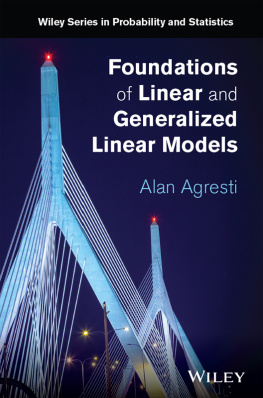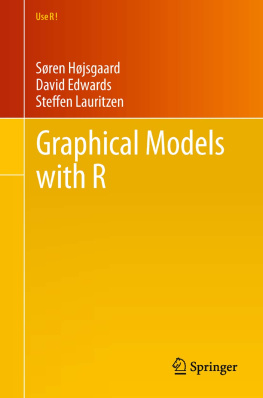
MODELING
LIFE
art models speak about nudity,
sexuality, and the creative process
S A R A H R. P H I L L I P S
Modeling Life
This page intentionally left blank.
M O D E L I N G L I F E
Art Models Speak about Nudity,
Sexuality, and the Creative Process
SARAH R. PHILLIPS
S TAT E U N I V E R S I T Y O F N E W Y O R K P R E S S
Cover: 1905 Life Modeling Class, Art Institute of Chicago, photo archives of Alex Blendl.
Photos of life drawing classes by David Friedman.
Published by
State University of New York Press
Albany
2006 State University of New York
All rights reserved
Printed in the United States of America
No part of this book may be used or reproduced in any manner whatsoever without written permission. No part of this book may be stored in a retrieval system or transmitted in any form or by any means including electronic, electrostatic, magnetic tape, mechanical, photocopying, recording, or otherwise without the prior permission in writing of the publisher.
For information, address
State University of New York Press
194 Washington Avenue, Suite 305, Albany, NY 12210-2384
Production, Laurie Searl
Marketing, Fran Keneston
Library of Congress Cataloging-in-Publication Data Phillips, Sarah R., 1963
Modeling life : art models speak about nudity, sexuality, and the creative process p>
Sarah R. Phillips.
p. cm.
Includes bibliographical references and index.
ISBN-13: 978-0-7914-6907-1 (hardcover : alk. paper) ISBN-10: 0-7914-6907-7 (hardcover : alk. paper) ISBN-13: 978-0-7914-6908-8 (pbk. : alk. paper) ISBN-10: 0-7914-6908-5 (pbk. : alk. paper) 1. Artists models. 2. Artists models
OregonPortlandAttitudes. I. Title.
N7574.P47 2006
702.8dc22
2005037172
10 9 8 7 6 5 4 3 2 1
Contents
Preface
vii
Acknowledgments
ix
One
Assuming the Pose: An Introduction to
Life Modeling
Life Models
Aesthetic Fashion and the Profession of
Life Modeling
Contemporary Life Modeling in the
United States
Two
Returning the Gaze: Objectification and the Artistic Process
What Is Art?
The Model as Object
The Model as Agent
The Particular Case of Photography
Three
Stephen
Four
Defining the Line: Sexual Work versus Sex Work 35
Cooperative Interaction in the Art Studio
Separating Sexual Work from Sex Work
Establishing That Serious Work Is Happening vi
CONTENTS
Five
Maintaining the Line: Coping with Challenges to the Serious Work Definition
Challenges to the Serious Work Definition
Six
Denise
Seven
Modeling Gender: Social Stigma, Power,
and the Penis
Social Stigma
Power and Vulnerability
Safety
Gender and Erotic Experience while Posing
Eight
Michael
Nine
Irene
Ten
Being Present: Getting Good at It
From Whimsy to Intention
The Good Life Model
Being Committed
Research Notes
Notes
Bibliography
Index
Preface
Since beginning my work with life models, the question that Ive been asked most frequently is: How did you get interested in doing research on that? The voices of the people asking suggest that they expect to hear a titillating story. Most people, Ive discovered, have a romantic and sexual picture of what goes on between a life model and an artist in a studio. They picture a young, female model and an older, male painter. They picture the painter gradually seducing his nave model in some made-for-Hollywood sexual awakening story. As is so often the case, the truth is much more mundane.
I began thinking about life models while I was completing my postdoc-toral appointment. At the time, I taught criminology courses for the Department of Sociology at Yale University, including one very large class of undergraduates. The class met Tuesday and Thursday mornings, and on Tuesday evenings, I attended figure-sculpting classes. Not an artist, I was taking beginning sculpting classes as a way to relax in the evenings. Midway through my second term, the figure sculpting class began working with a new model, a young woman who would be posing nude for the class for the next five weeks.
I noticed nothing unusual about this model as she discarded her robe and assumed a reclined pose. About fifteen minutes into the session, however, the model changed her pose, and we happened to make eye contact. It was then that I realized I knew her: earlier that day, she had been taking notes in the front row of my criminology lecture.
For the first time, I felt awkward and embarrassed. I was no longer looking at a nude model, I was looking at one of my students naked, a student to whom I would have to assign a grade in just a few weeks. In retrospect, this need not have been a problem if I had simply confronted the awkward situation and discussed how to handle it. Instead, I responded with striking immaturity: I never returned to my figure sculpting class, and the model/student moved her seat to the very back row of the lecture hall. Neither of us ever said a word about it.
vii
viii
PREFACE
What had suddenly turned my nude model into a naked girl? How had my artists gaze transformed instantly into that of the voyeur? And what was a Yale student doing undressing for money, anyway? This book represents the culmination of the research journey sparked by these questions. Over a ten-year period, I have read about models, interviewed current and former models, and spent countless hours watching life models work in schools and studios. I am not a life model, and I do not presume to speak for all life models.
Nor am I an artist. My husband, David Friedman, is an artist, but with the exception of taking the photographs for this book, his work has not taken him to the life studio for many years. There are many fine works about artists, their practices, and how we typify both artists and the artistic endeavor. In this book, I have not sought to portray the artists perspective. I have, instead, focused my attention narrowly on contemporary life models in the Western art tradition. Unlike artists, life models have rarely been asked to explain their work. In this book, I have tried to give them a chance to speak for themselves and in their own words.
Acknowledgments
The earliest stages of this research were supported by small grants from The Foundation for the Scientific Study of Sexuality and a Meyer Grant from Pacific University. I am grateful to the University for providing me with sab-batical funding so that I could complete this project.
My thanks to Nancy Ellegate, senior acquisitions editor at State University of New York Press, for her continued interest in my project, and Laurie Searl, senior production editor, for her patient guidance.
Over the course of ten years, several Pacific University undergraduate students helped with parts of this project. In particular, I appreciate the many hours of tedious transcription done by Lalea Dolby, Laurel Martin, and Anne Sinkey.
These students occasionally helped with interviews and presentations as well.
I am grateful to my husband, David Friedman, and friend Dan Kvitka for their photography and help in preparing images for this book.
My parents, Joan and Rich Phillips and Kay and Howard Friedman, and my sisters, Kate and Liz, have followed the long path of this work. I am always appreciative of my familys love. My sister Kate Phillips, a writer herself, spent many hours reading and editing drafts. She, especially, has given me unwa-vering kindness and encouragement over the years.
Next page







